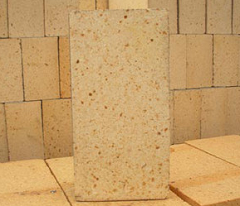Silica brick industrial
Apr 29, 2022
Different types, sizes, and structures of kilns for glass production have different requirements for the performance and use of refractory materials. The shaped refractories used in the glass industry, especially float glass furnaces, mainly include three categories: cast refractories, silica bricks, and magnesia refractories. Silica bricks are made from silica with a SiO2 content of ≥96%, adding mineralizers and binders, and going through processes such as kneading, molding, drying, and sintering. The higher the SiO2 content in the silica raw material, the higher the refractoriness of the product.
Silica brick is an acid refractory material with strong acid corrosion resistance. Silica brick has the characteristics of high load softening temperature, low density, and low price. High-temperature load-bearing parts of hot blast stoves, and carbon roasting furnaces, and other thermal equipment.
Silica brick is an acid refractory material with strong acid corrosion resistance. Silica brick has the characteristics of high load softening temperature, low density, and low price. High-temperature load-bearing parts of hot blast stoves, and carbon roasting furnaces, and other thermal equipment.

Silica bricks for glass pool kilns are mainly used for furnace sills and part of the flame space. The quality of silica bricks is related to the normal operation and life of the furnace. Silica brick has experienced three generations of development since its inception. The first generation of silica bricks are traditional ordinary silica bricks, and the second generation is advanced silica bricks. Compared with ordinary silica bricks, it has the characteristics of "three highs and three lows". "Three high" refers to high purity (SiO2 content>96%), high load softening temperature (>1685℃), high tridymite and cristobalite content (high tridymite and cristobalite content>90%); "three low" It refers to low impurity content (Al2O3+2R2O≤0.5%), low true density (≤2.34g/cm3), and low residual quartz (≤3%). The third generation is an improved brick of the second generation. The content of CaO is reduced from the original 2% to 3% to less than 1%, the content of alkali metal oxide is further reduced from 0.5%, and the content of FeO is less than 0.2%. The rate has dropped from 20% to 22% in the second generation to 16% to 18%.
The production technology of silica bricks in my country is relatively mature, but the quality of products varies. With the development and promotion of oxy-fuel combustion technology in glass kilns, the silica bricks used tend to require lower apparent porosity and lower melting index. Rat holes created when used in melting furnaces require the material to be prepared with fewer structural defects and dense fire clay bonding between expansion joints.
Relevant information
-

Main properties of magnesium oxide refractory
Performance characteristics of magnesia refractories and other basic refractories Performance characteristics of magnesia refractories and other basic refractories Refractories containing more than 80% ... -

What properties of lightweight insulation fire clay bricks can be improved by the addition of kyanite?
Lightweight insulation fire clay bricks are a kind of shaped refractory material with clay as the main raw material, which is processed, shaped, dried, and calcined with clay. on the kiln. Due to the r ... -

How is the effect of white fused alumina abrasive used in refractory materials?
After mixing, forming, drying, and firing at high temperature in a shuttle kiln. The product has the characteristics of high refractoriness, good thermal shock stability of white corundum, high high te ... -

Characteristics of refractory magnesia chrome bricks for lime kiln
Lime kilns are mainly classified into square kilns and circular kilns. According to the classification of fired products, they can be divided into lime kilns, ceramic kilns, cement kilns, glass kilns, ...

